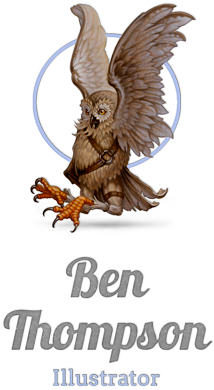Artist Spotlight: Alphonse Mucha
Sunday, May 06, 2012 Filed in: Artists | Artist Spotlight
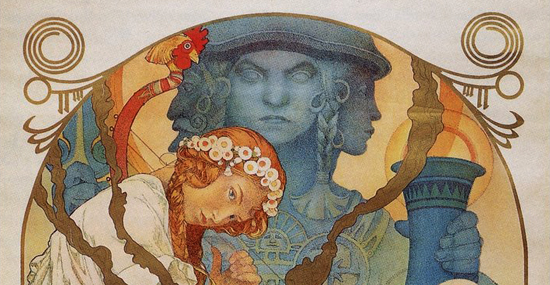
No artist is without their influences. Every one of us can point to at least a handful of artists that have in some way shaped our own work, or otherwise inspired us to strive for excellence in our chosen field. For most of us, that handful is more like a truckload. Some of these artists provide brief flashes of inspiration that excite us with possibilities, while others will incite a lifelong love so broad is their influence upon our own work and imagination
I also have my influences, and every attempt to break my favorites into manageable groups to try and narrow the field is an exercise in futility as I long ago recognized that there is quite literally no end to the artists that I have admired, studied, or who have otherwise shaped the aesthetics in my own work. It is in this spirit I will begin an ongoing series of posts that highlight some of these artists and celebrate some of what, for me at least, have been their most evocative works.
The images featured in this context will not always be counted among their most prominent or recognized, but rather a representation of their work that most excites me and solidifies them as a personal influence. Likely these posts will feature more than the average number of images as it is often hard to narrow down the favorites even within a single artist! I hope that in doing so you as the reader will have a slightly broader appreciation of these artists, and look to find more examples of their work.
For my first post in this series I have selected Alphonse Maria Mucha. I have not picked him because he is my favorite (see above!), or because his influence is most present in my work (far from) but rather because of his longevity in this ever-growing list.
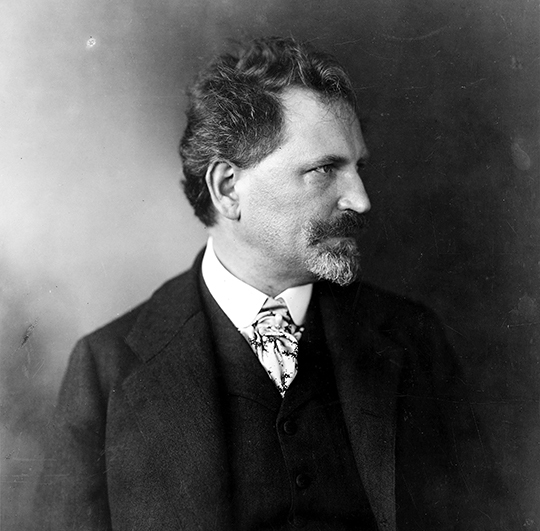
I was first attracted to Mucha's work as an art student where he was held up as one of the preeminent members, even father of the Art Nouveau movement in the late 1800 to early 1900's. For me his work represented the perfect joining of art and design. The composition of each and every piece executed in an exacting manner, no detail too small or unimportant to matter. It should be no surprise that upon closer inspection, Mucha's influence and direct involvement would extend into physical ornamentation, including jewelry, architecture and furniture. It would also make him his name and fortune in advertising as he became known for his poster work for the theatre (thanks largely to the patronage of Sarah Bernhardt), and labels for everything from champagne to cigarettes.
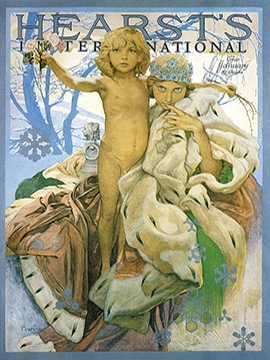
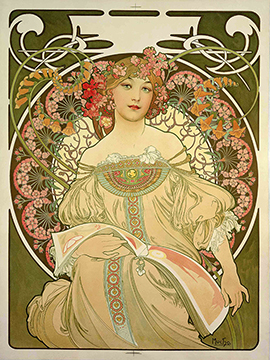
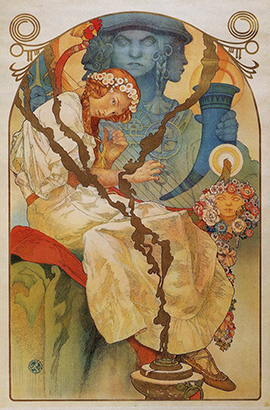
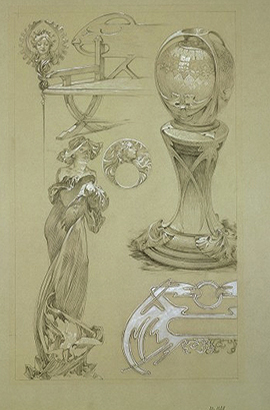
It was his non-commercial, and largely private work however that raised Mucha from "Noteworthy" to "Master" in my personal standings. His work on the illustrations for a publication of the Lord's Prayer or "Le Pater", and ultimately the massive undertaking of the Slav Epic continue to be a source of unparalleled awe for the majesty and sensitivity they convey in their respective scale.
The illustrations for "Le Pater" were each intended to visually represent a line from the Lord's Prayer (seven in total), and tended to portray the mystical and mysterious qualities of a God typically represented in a more fatherly light. The sweeping compositions and use of light and dark are all masterfully executed and guide the viewer through the many details with an even pace, allowing the viewer to get lost in the mood each conveys.
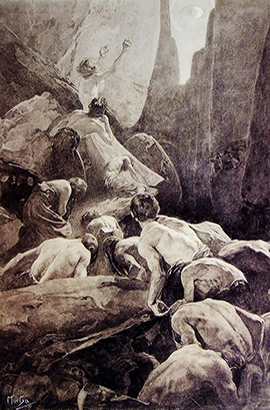
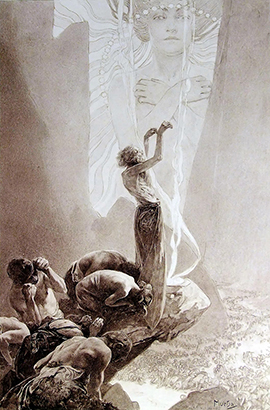
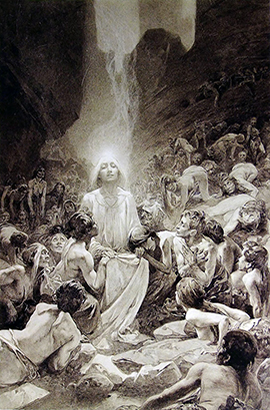
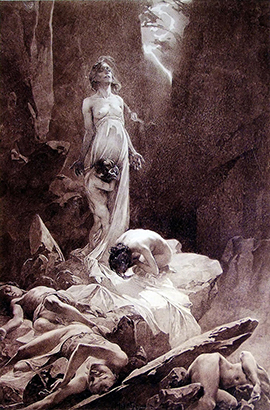
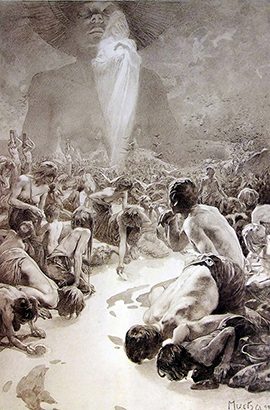
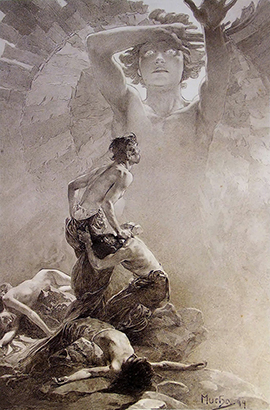
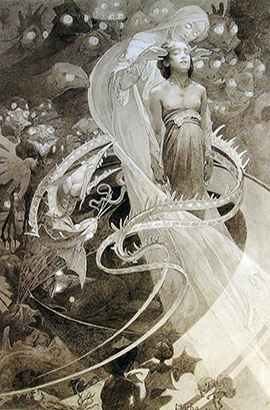
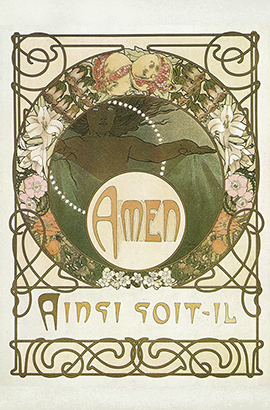
The resulting publication of the collected works featured pages of text, which also featured designs by Mucha and would see a publication of only 510 copies. The book was referred to by the artist himself as his printed masterpiece, having received the totality of his attentions during it's creation. As pieces intended for publication the scale of these originals are small when compared to the magnitude of their subject matter measuring roughly 24"x32" each and reproduced in black and white, adding to their stark nature. These pieces alone would likely have been enough to solidify him in the art annuals, but would ultimately pale when compared to the massive undertaking of his later life's work.
The Slav Epic on the other hand tends to hit people as a bit of a surprise. Most of us tend to associate Mucha with his advertising work, largely made up of beautifully composed women and delicate lacework designs all interwoven to make for some truly striking illustrations. When first shown the Slav Epic, we find it hard to reconcile them as works originating from the same man. The media used, the subject matter and the scale are all a departure from much of his previous work, though the results are undeniable when seen for the first time.
The pieces are intended as a visual narrative to the history of the Slavic people and their personal struggle for a place in the world. The 20 paintings would take 18 years to complete and span an expansive timeframe pulling subjects from biblical times all the way to the turn of the century, often mixing them together to great effect. Their palette is colorful and varied, while showing a restraint that somehow keeps them muted as a whole when seen together. It is their scale however that really packs a wallop... each piece is often in excess of 28 feet on its longest side. This scale is important when you consider that they were intended to be viewed in person rather than published in a book. These were first and foremost “Fine Art”, and it was Mucha's hope that the viewer would actively participate in these images rather than just look upon them in a passive way.
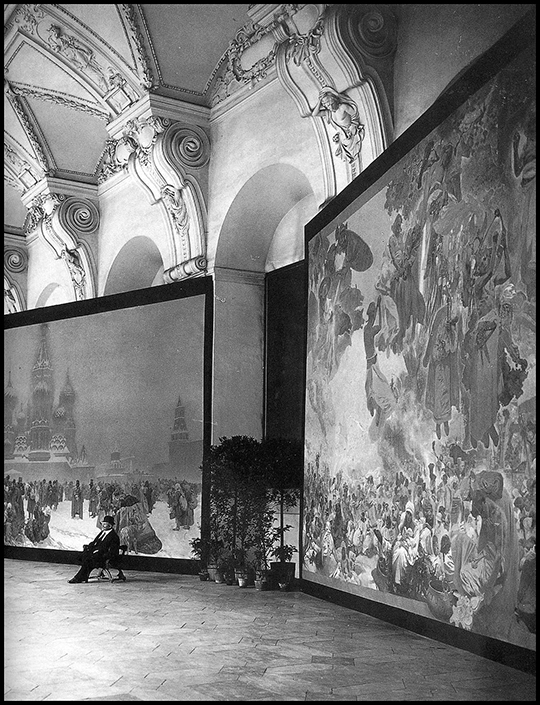
I was first confronted with these works in a book of Mucha's work purchased in 1998 at "The Spirit of Art Nouveau" show at the San Diego Museum. Even at their 2"x3" reproduction size, these images were awe inspiring in a way that nothing in the rest of the book (or the show itself for that matter!) could ever hope to be. I spent the years that followed in fruitless searches for large-scale reproductions of this work so as to better study them. I promised myself that if ever the opportunity presented itself I would make it a priority to see these pieces in person, so deeply had they impressed me.
My chance would come 8 years later when I attended the Magic the Gathering Pro-Tour in Prague as a guest artist. As luck would have it the hotel I was staying at was less than a block away from the Mucha Museum, and I planned to spend a whole day studying its contents. The museum, while small, was packed with original sketchbooks, prints and paintings many of which had not seen publication. I was in heaven as I wandered from piece to piece soaking up its contents, but continued to look for the first of twenty canvases that would announce the Slav Epic portion of the building. Imagine then my shock when I was told by the docent on duty that the Slav Epic had actually been moved just before WWII in order to preserve the paintings to the small town of Moravsky Krumlov, 135 miles from the city of Prague itself (effectively the other side of the country)!
I was crushed, as I was unsure just how to manage what would likely be a daunting pilgrimage in foreign territory. In the end I needn't have worried, as fellow artist and friends Terese Nielsen and Dawn Manwaring were more than up to challenge and the three of us made the trip (which was indeed daunting with over three and a half hours spent on trains, busses, transfers etc.) Upon arriving it turned out we had the entirety of the decrepit building in which the paintings are housed to ourselves, and we spent the ensuing hours in rapt wonder of what I have come to regard as some of the finest paintings I have ever laid eyes upon.
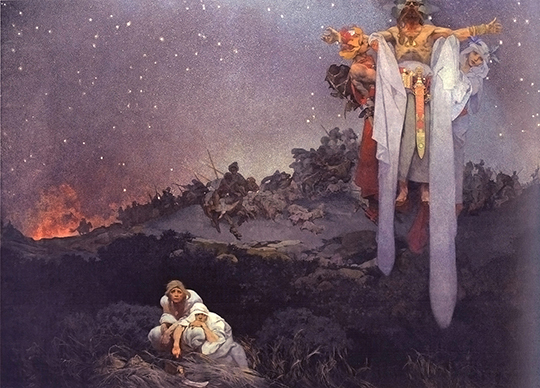
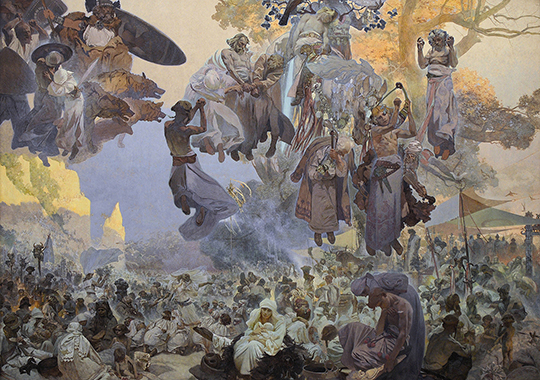
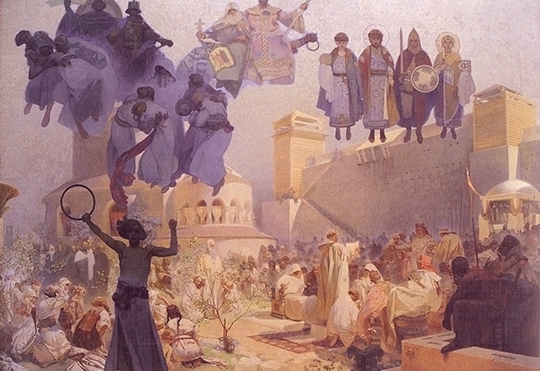
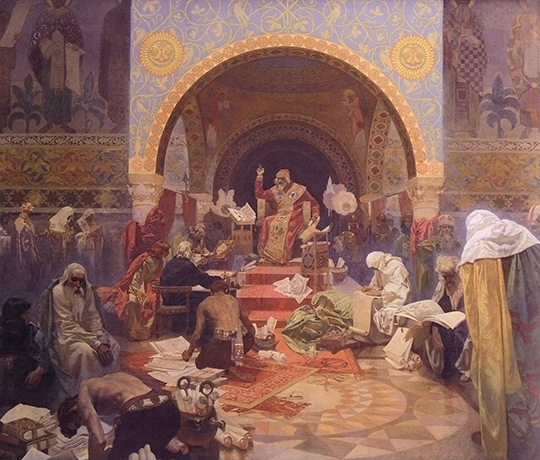
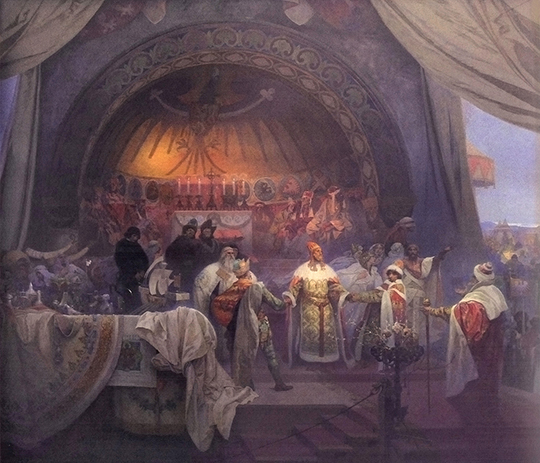
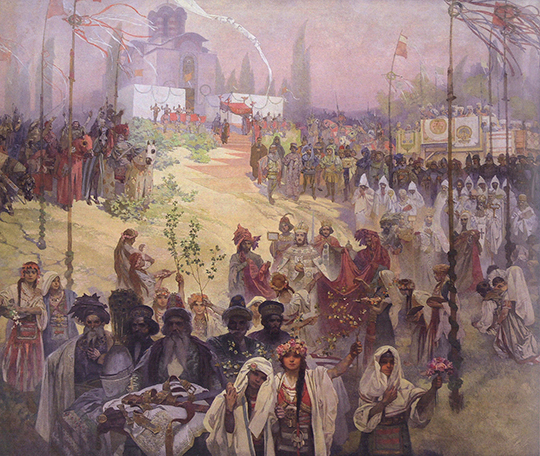
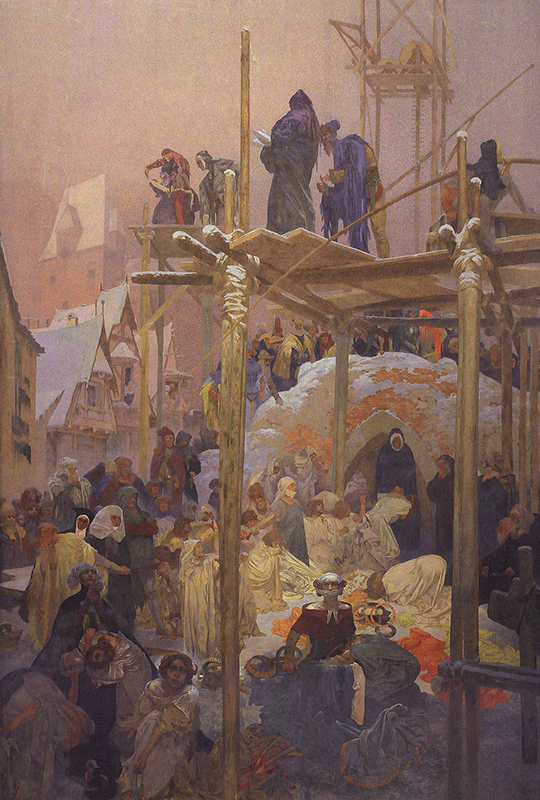
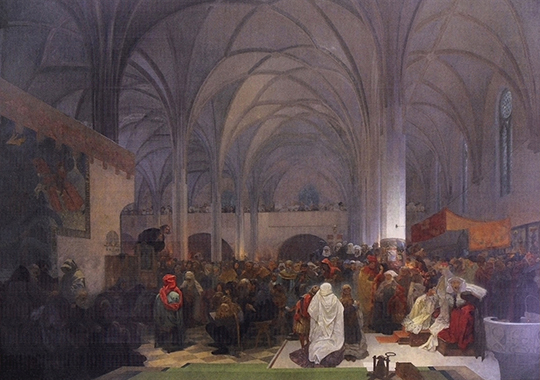
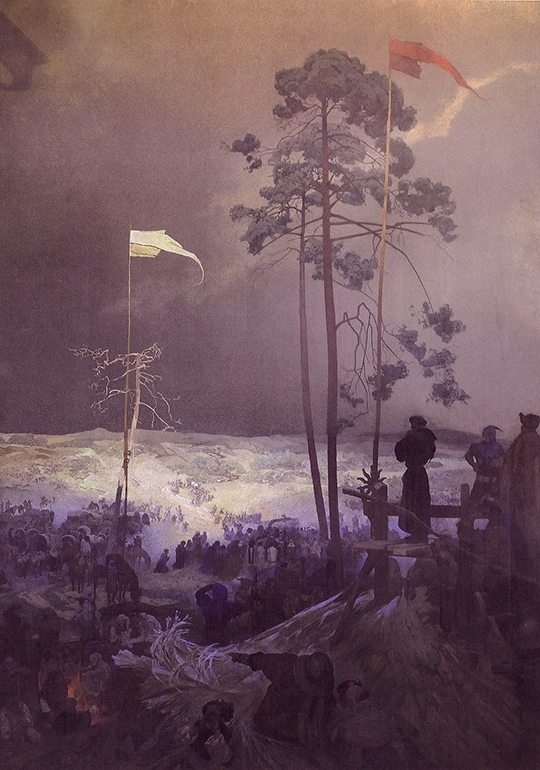
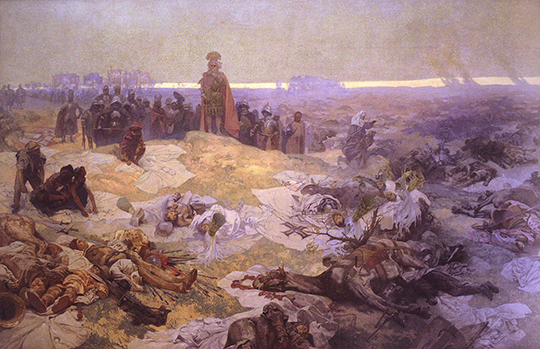
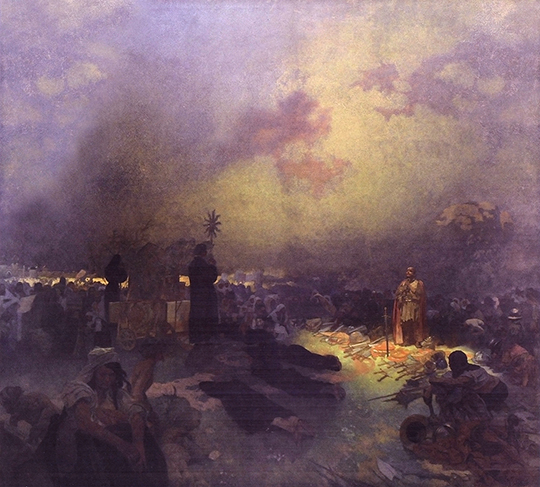
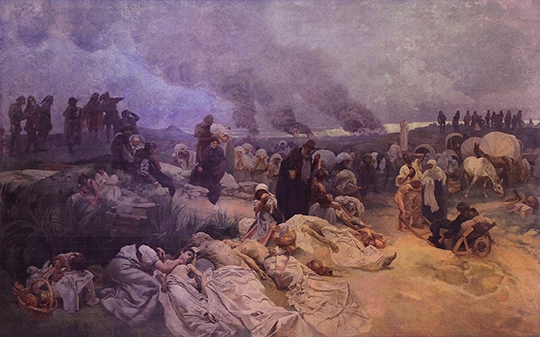
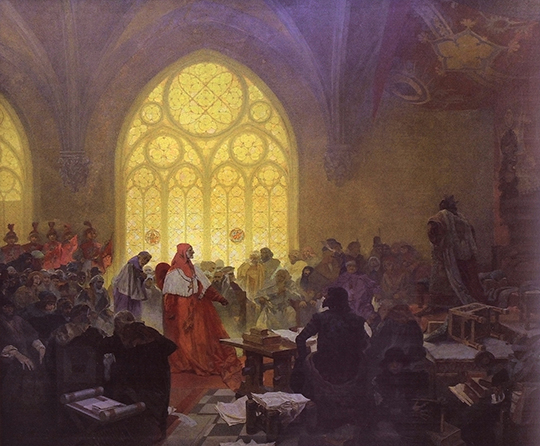
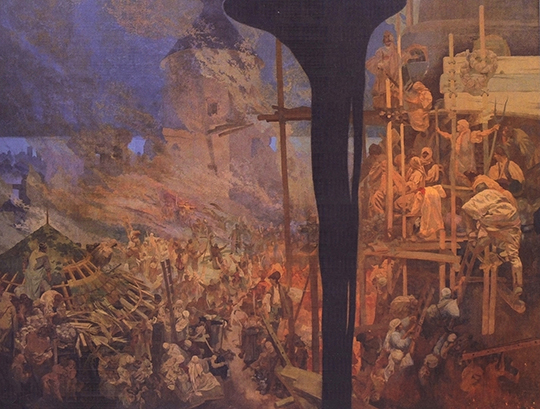
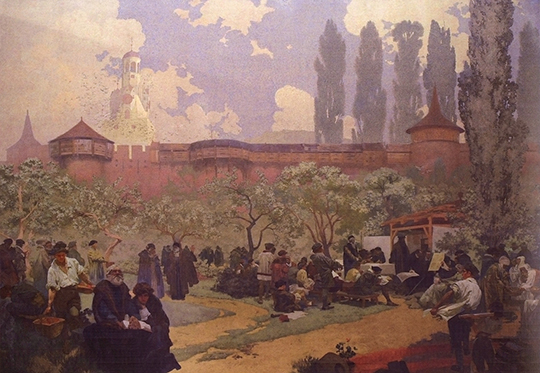
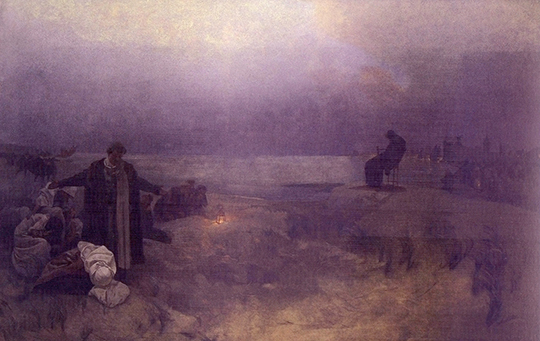
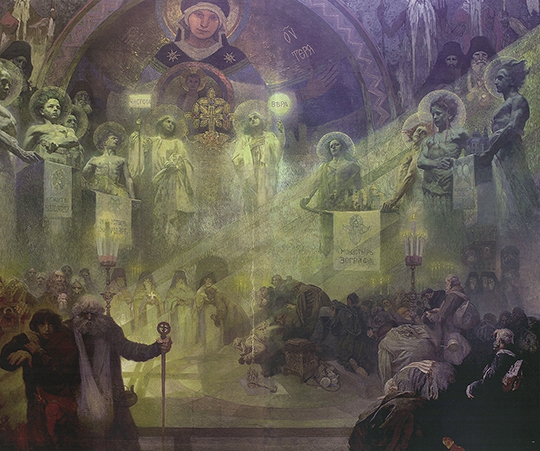
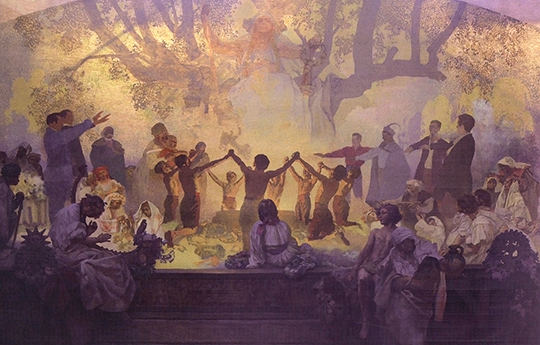
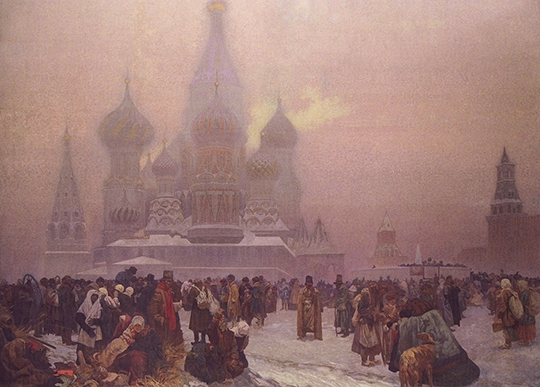
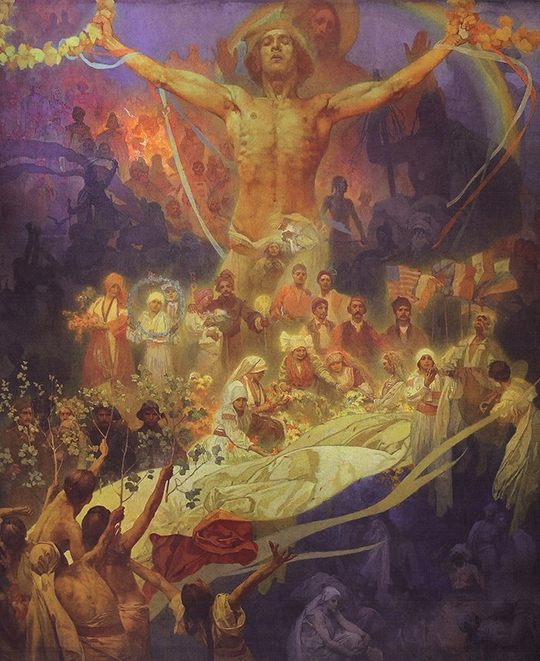
These paintings are only just now being scheduled to move back to the city of Prague some 85 years after Mucha gifted them to the city provided they would be housed in a place of honor. Though the city has declared their intent to make a permanent display of the pieces, No date has been set for this transition.
The Mucha Foundation has recently revamped their website and it is awash in images and information surrounding the life's work of this singular artist. The Slav Epic has a section dedicated to it, though Le Pater is lacking a complete collection of images.
I look forward to continuing the Artist Spotlight series in the future, but for now I believe Alphonse Mucha to be a more than worthy subject for this inaugural post. What are some of your favorite images from his body of work and why?
Links:
Mucha Foundation
Wikipedia
All images: Alphonse Maria Mucha
blog comments powered by Disqus
